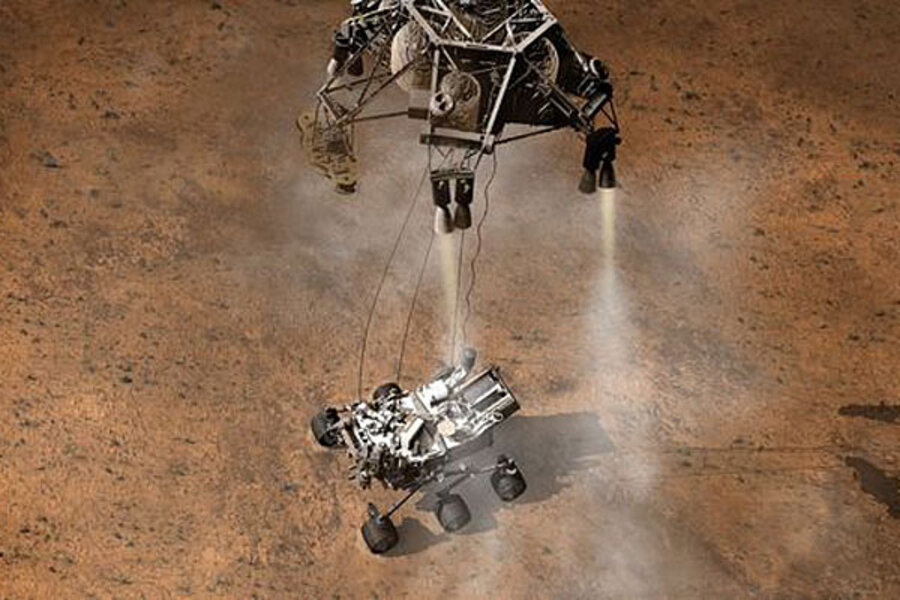NASA hopes Mars rover landing will be 'grand and profound'
Loading...
| Washington
In the early morning hours of Aug. 6, NASA and space enthusiasts across the world will be able to monitor the Mars landing of the most advanced robot ever to be sent to another world.
Named Curiosity, the robot — or “rover” — has been heading toward Mars for nearly eight months. The landing is scheduled for 1:31 a.m. EDT.
“Is it crazy? Not so much,” said Doug McCuistion, the director of the Mars Exploration Program. “Is it risky? Landing on Mars is always risky. … Every landing is unique. Every landing is like a first.”
At a news conference Monday, NASA scientists said they were looking for evidence that life existed on Mars billions of years ago. This evidence could include indicators of water, sources of energy or sources of carbon — all of which are essential to sustain life.
Curiosity was launched into space last Nov. 26 from Cape Canaveral, Fla. The rover will go from 13,000 mph to zero in seven minutes, and will land in Gale Crater, which NASA scientists think held water billions of years ago.
In the middle of Gale is Mount Sharp, a mountain that’s taller than any in the Lower 48 U.S. states, said John Grotzinger, a NASA scientist who’s working on the mission. Curiosity will explore the crater and the mountain, looking for clues of life.
“I see it as an extraordinary opportunity to get a bearing on our own existence on Earth,” Grotzinger said. “Ascending Mount Sharp, we’re going to go through the major eras in the … history of Mars that give us the basis for comparison to our own planet.”
Grotzinger is aware that a lot is riding on the mission, given NASA’s shifting budget priorities.
“I think we all feel this incredible sense of pressure on MSL to do something grand and profound,” he said, referring to the Mars Science Laboratory division of NASA. “I think it’s going to be thrilling.”
The precision of the landing is a significant improvement from previous Mars missions, said Pete Theisinger, a project manager at the Jet Propulsion Laboratory in Pasadena, Calif. Helped by better communications technology, scientists will be able to land Curiosity within a very small range, on top of the most valuable scientific resource in the crater.
The entry process also is greatly improved, Theisinger said. In missions in the 1970s, the rover approached the Martian surface “falling like a rock,” he said. Curiosity will provide both black and white and color panoramic, high resolution photos of the Martian surface as well as of Gale Crater and Mount Sharp.
In an effort to make the Curiosity landing an interactive and consumer-friendly experience, NASA established a partnership between its Jet Propulsion Laboratory and Microsoft Corp. to create a free video game on Xbox Live with Kinect that lets the player land Curiosity on Mars.
“We are bringing the challenge of landing Curiosity to every living room that would like to play in this game,” Theisinger said. A 3-D iPad app, as well as a cellphone app that lets the player simulate being a Martian, are available, too. NASA also will engage the public through social media, museum sleepovers and a Mars art installation.
Despite all the interactive features, NASA says this is far more than fun and games. “This is serious business,” said Dwayne Brown, a NASA public affairs officer. “This is the hardest mission ever attempted in the history of planetary robotic exploration.”







